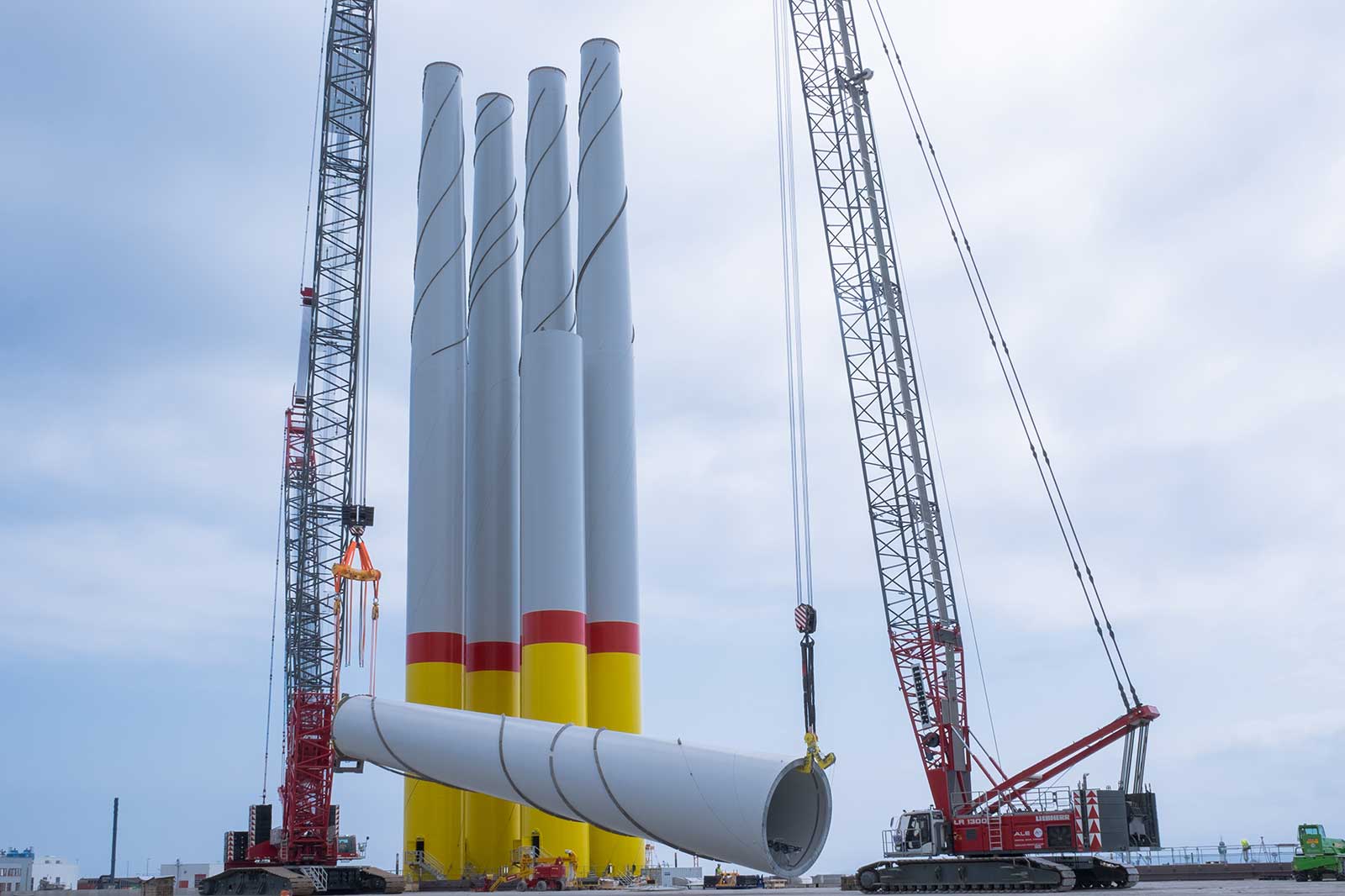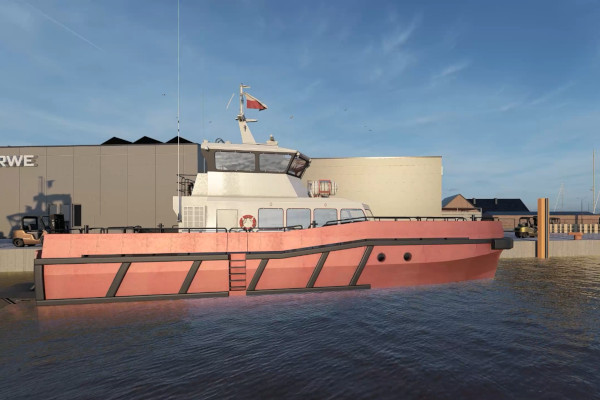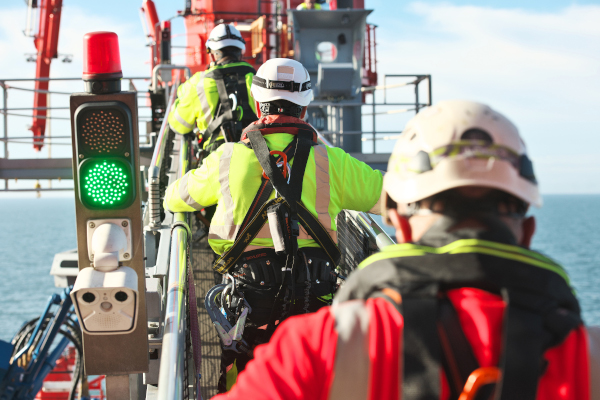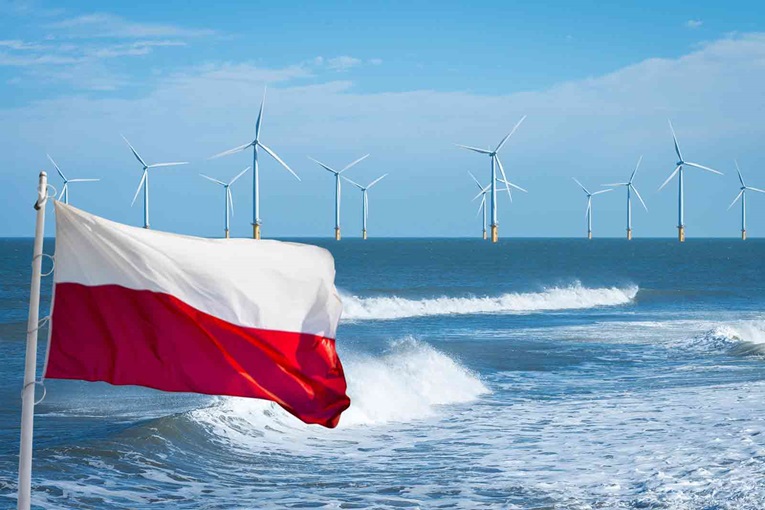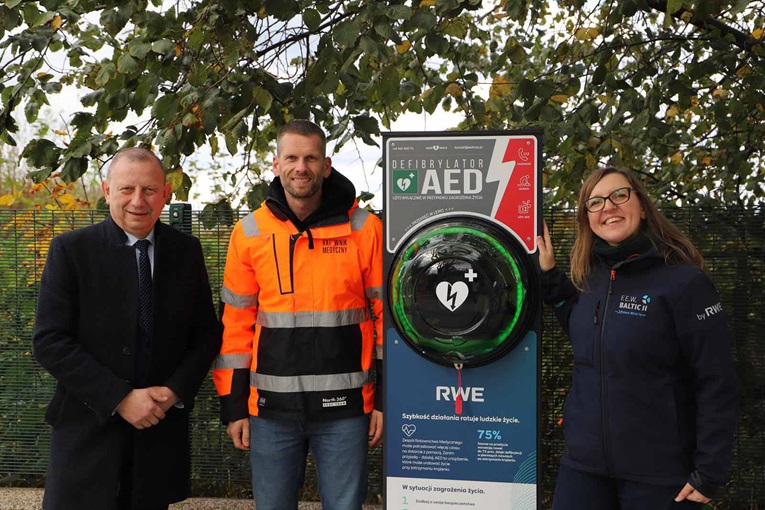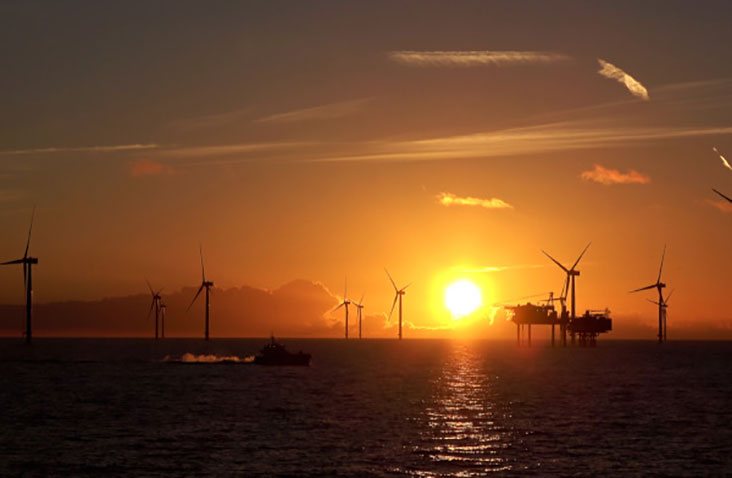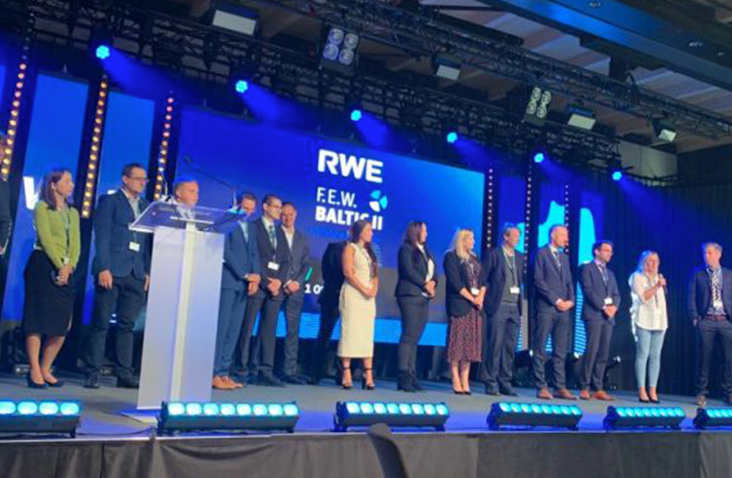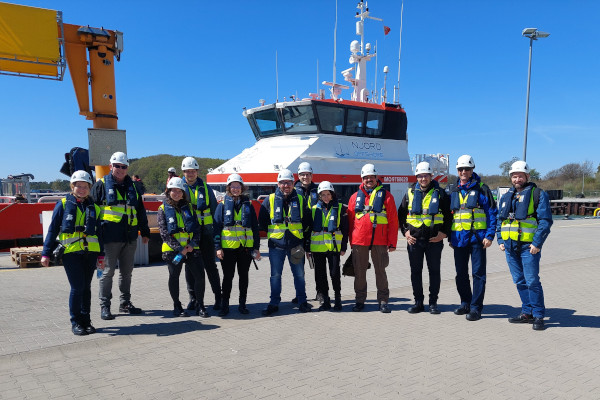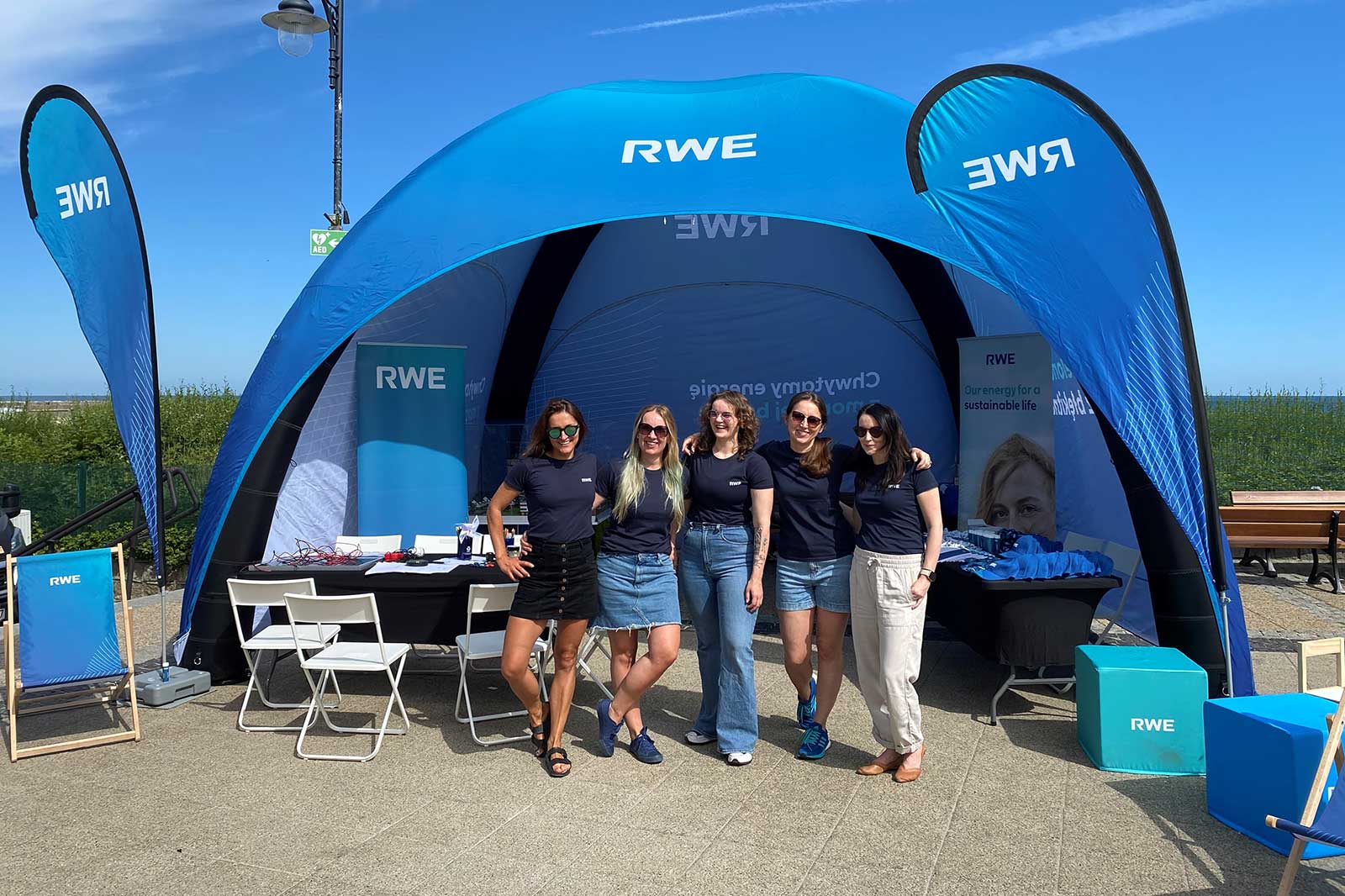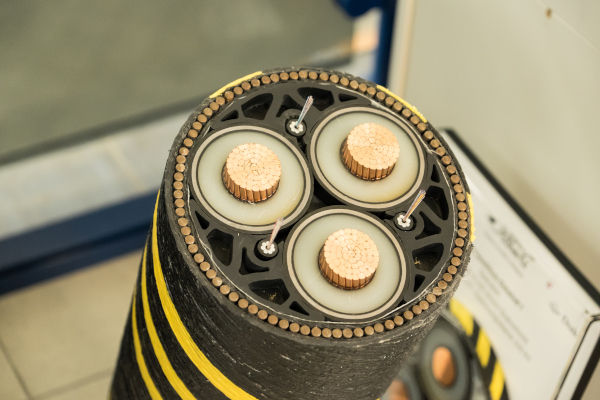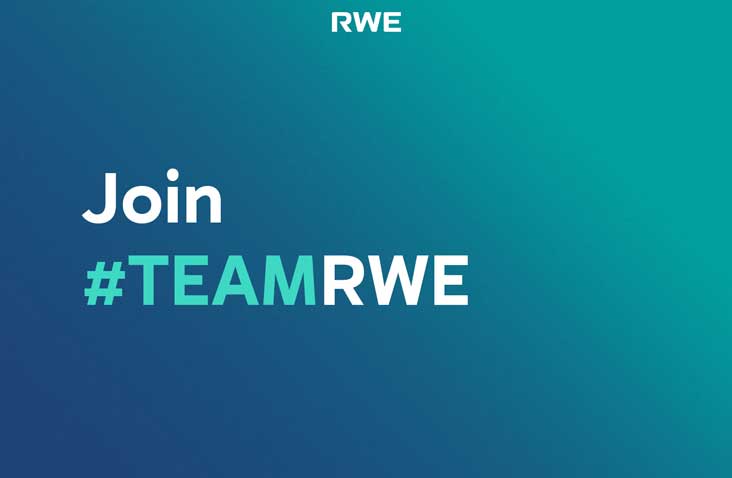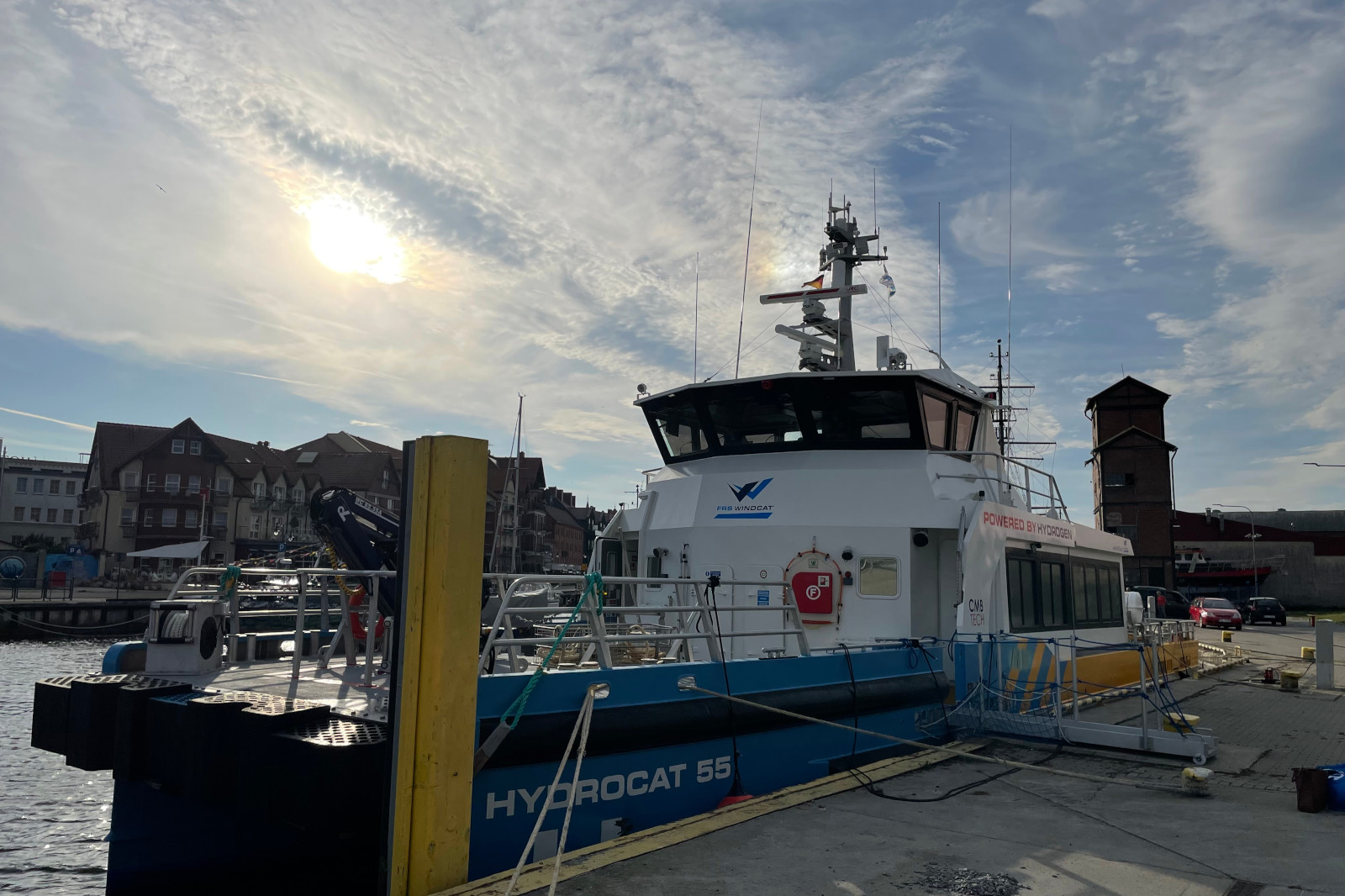RWE Offshore Wind GmbH
Study Visit: RWE and FRS Windcat Polska present hydrogen-powered crew transfer vessel in the Port of Ustka
- Around 600 liters of diesel can be replaced by hydrogen per refueling to significantly reduce CO2 emissions
- Reduction of up to 220,000 liters of diesel and a maximum save of nearly 600 tons of CO2 per year is possible
- Port of Ustka to be future operation and maintenance base for RWE’s F.E.W. Baltic II offshore wind farm
Warsaw, 25 September 2023
RWE and FRS Windcat Polska brought over 10 local stakeholders to the Port of Ustka to introduce Hydrocat 55 – one of the world’s first crew transfer vessels (CTV) for the offshore wind industry, which is a dual-fuel vessel powered by marine gas oil (diesel) and hydrogen to significantly reduce CO2 emissions.
In the presence of Jacek Maniszewski, Mayor of the city of Ustka, further representatives of the city, the Fishery Union, the shipyard and the port took a guided tour through the innovative FRS Windcat vessel, which was berthed at RWE’s future quayside. RWE plans to use the Port of Ustka as the operation and maintenance base for F.E.W. Baltic II, its first offshore wind farm in the Polish Baltic Sea.
Jacek Maniszewski, Mayor of the city of Ustka: “Offshore wind is crucial for the energy transition in Poland. We as harbor city taking a leading role in the future offshore wind build-out. With the visit of the dual-fueled vessel we have once again proven that our port is ready to support the operation of offshore wind farms off the Polish coast.”
The hydrogen internal combustion engines used on board the vessel can replace diesel fuel with hydrogen. The Hydrocat 55 carries around 200 kg of hydrogen, which is enough to replace up to around 600 liters of diesel. The hydrogen is stored in 27 cylinders on deck at a pressure of 350 bars, which is sufficient for up to three days of operation depending on the work profile. Using hydrogen means a annual reduction of up to 220,000 liters of diesel and a maximum possible save of nearly 600 tons of CO2 per year.
Tim Kunstmann, Managing Director of FRS Windcat Polska: “This technology is suitable for a CTV primarily because existing diesel engines can be used. No fundamental changes to the main engine are required, which means that maintenance and repair remain simple, and the engine can easily be switched back to diesel fuel without any modifications.
Even if hydrogen is not available, the vessel can continue to run on traditional fuel, making it a very robust and reliable solution for the offshore wind industry. The Hydrocat 55 vessel will be ready for operation by end of 2023. Its sister vessel Hydrocat 48 has been in service since last year and supports offshore wind farms in the Netherlands, Belgium and the UK.”
Grzegorz Chodkowski, Vice President Offshore Development Poland at RWE Offshore Wind: “Shipping is responsible for around three percent of annual global greenhouse gas emissions. And we are convinced that offshore wind could become a first mover and an enabler to the global shipping industry for vessel decarbonisation. The FRS Windcat solution can be seen as a steppingstone to fully hydrogen-powered CTVs. At RWE we operate 19 offshore wind farms in five countries. And we have further offshore projects under construction and in development – for example the F.E.W. Baltic II project here in Poland. We are strongly committed to providing a carbon-neutral service through the entire lifetime of our offshore wind farms.”
F.E.W. Baltic II – RWE’s first offshore wind farm off the Polish coast
RWE is progressing with the development of its first offshore wind farm off the Polish coast. The F.E.W. Baltic II offshore project is located north of the Słupsk sand bank in the exclusive economic zone in the central Polish Baltic Sea. With a planned installed capacity of 350 megawatts, the wind farm will be capable of producing enough green electricity to supply the equivalent of around 350,000 Polish households. Development is well underway with commissioning expected by the end of this decade.
Downloads

